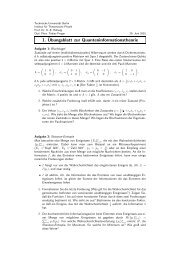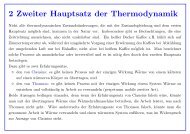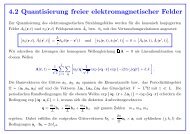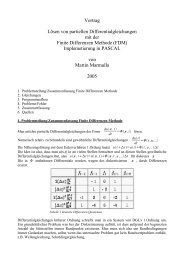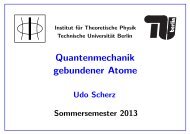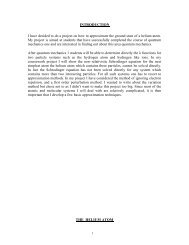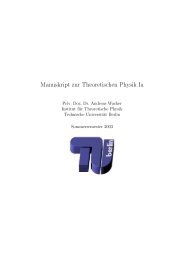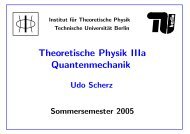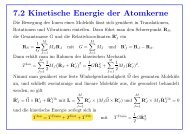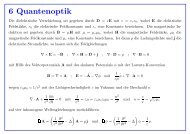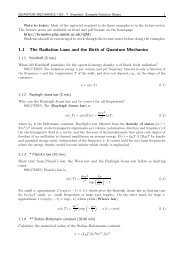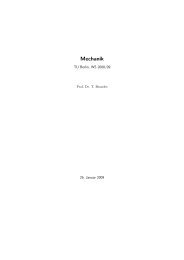Photoelectron counting in quantum optics
Photoelectron counting in quantum optics
Photoelectron counting in quantum optics
Create successful ePaper yourself
Turn your PDF publications into a flip-book with our unique Google optimized e-Paper software.
Coherence functionsSpecial cases, normalised versions, s<strong>in</strong>gle-mode example H = ωa † aG (1) (t, t + τ) ≡ 〈E (−) (t)E (+) (t + τ)〉 (12)G (2) (t, t + τ) ≡ 〈E (−) (t)E (−) (t + τ)E (+) (t + τ)E (+) (t)〉(13)g (2) G (2) (t, t + τ)(t, t + τ) ≡G (1) (t, t)G (1) (14)(t + τ, t + τ)number state ρ(0) = |n〉〈n| g (2) n(n − 1)(τ) =n 2 = 1 − 1 ncoherent state ρ(0) = |z〉〈z| g (2) (τ) = z∗ z ∗ zz|z ∗ = 1. (15)z| 2Def<strong>in</strong>ition (bunch<strong>in</strong>g, antibunch<strong>in</strong>g; sub/super-Poissonian)- Bunch<strong>in</strong>g: g (2) (τ) < g (2) (0), anti-bunch<strong>in</strong>g g (2) (τ) > g (2) (0).- Super-P. g (2) (0) > 1, sub-P. g (2) (0) < 1: relation to p n (t, t + T ).




